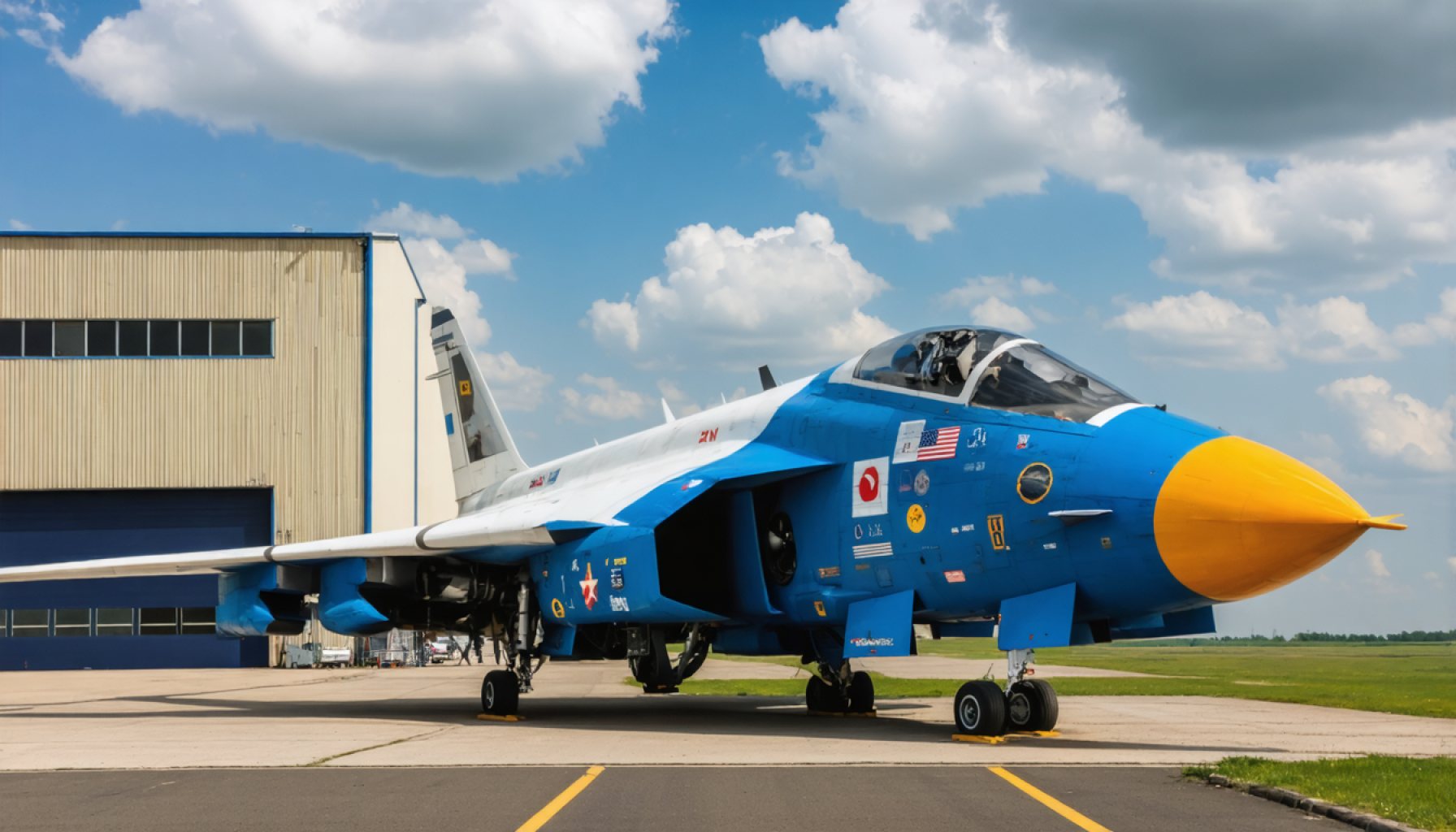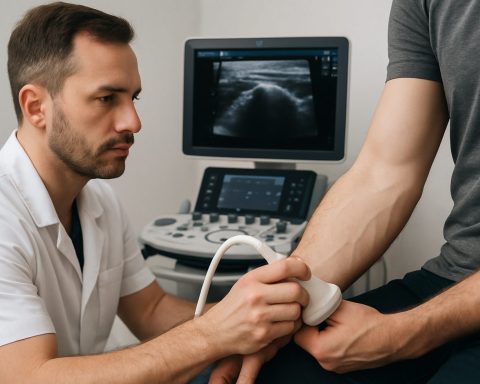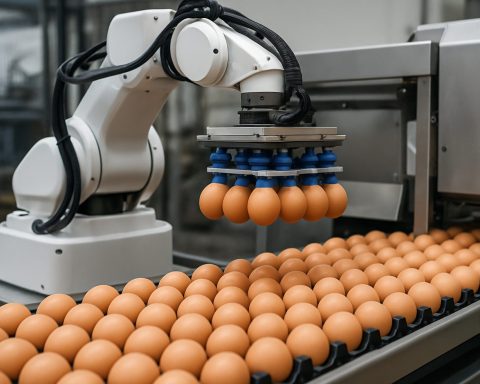- WZL1 exemplifies Poland’s aerospace transformation, blending Soviet-era helicopters with modern Western technology like the Apache.
- Collaboration with Lockheed Martin has propelled WZL1 into a global role, including the production of Apache helicopter components.
- Technical English skills are emphasized, ensuring engineers can navigate complex schematics as well as language barriers.
- Vocational training initiatives in Łódź aim to create a robust pipeline of skilled aviation mechanics for the future.
- This evolution highlights a shift from outdated machinery to modular, sophisticated technology, reflecting a broader cultural change.
- WZL1’s journey underscores the ability to innovate, adapt, and draw from historical legacies to pave the way for future success.
Against the backdrop of whirring rotors and towering hangars, Wojskowe Zakłady Lotnicze No.1 (WZL1) stands as a testament to an era of transformation in Poland’s aerospace industry. Once entrenched in Soviet-era equipment, WZL1 now navigates the thrilling yet daunting tides of modernization—an odyssey where Soviet-born Mil helicopters coexist with Western prowess like the Apache and AW101.
Picture this: inside the expansive halls filled with the silhouettes of helicopters, a symphony of clanking metal and buzzing drills resounds. Here, Mi-8 and Mi-24 helicopters, hefty mainstays of Polish aviation, line up like aging giants, their destiny intertwined with that of agile Western designs. While Polish Armed Forces cling to these relics, WZL1 tactfully nurtures an arsenal of skills to sustain them, breathing new life with upgrades and refurbishments.
But a winds of change are howling. A robust partnership with Lockheed Martin thrusts WZL1 into a new dimension. Earning the prestigious Production Line Validation Certification, the factory is now an integral cog in Lockheed Martin’s global machinery, fabricating components for the renowned Apache helicopters—an emblem of the company’s evolving identity.
Yet, the metamorphosis demands more than technical acumen. Emphasis shifts to mastering the art of technical English, an obstacle that challenges seasoned engineers to wield language as adeptly as they handle their tools. Language courses, intertwined with skill-building programs, promise a future where WZL1 employees read complex schematics as effortlessly as pilot manuals.
Town hall meetings in Łódź signal exciting plans for vocational schools, training the next generation of aviation mechanics—a blueprint for a vibrant talent pipeline. As city officials and industry leaders convene, whispers of these discussions fuel anticipation. The dream: a steady stream of skilled graduates ready to embrace—and shape—the technological future of aviation.
Navigating these realms is a narrative of resilience, ambition, and collaboration. WZL1 collaborates with the Armament Agency and the Ministry of Defence, weaving an intricate tapestry that marries local educational infrastructure with national defense needs.
The story of WZL1 resonates far beyond Poland’s borders. It is a narrative that underlines the global pivot from antiquated machinery to sophisticated, modular technology. This transformation transcends mere parts and processes; it is a profound cultural shift, embracing innovation, collaboration, and foresight.
As the sun sets over the vast industrial complex, casting golden hues on the silhouettes of rotating blades, WZL1 stands as a beacon of what is possible—a chronicle of evolving heritage meeting the cutting edge. This journey is more than a technological upgrade; it is a reaffirmation of a nation’s capability to innovate, adapt, and soar toward a future that once seemed beyond reach.
The key takeaway: with vision, collaboration, and dedication, even the most entrenched legacies can be transformed into a platform for future success. Poland’s journey exemplifies the potential that comes when the past is not erased but reimagined.
The Evolution of Poland’s Aerospace: WZL1’s Modernization Journey
Overview of WZL1’s Transformation
Wojskowe Zakłady Lotnicze No.1 (WZL1) represents a significant shift in Poland’s aerospace industry, showcasing a journey from dependence on Soviet-era technology to embracing western innovations like the Apache and AW101 helicopters. This transition highlights the merging of old and new, as WZL1 continues to service Mi-8 and Mi-24 helicopters while upgrading its capabilities to manufacture components for Apache helicopters.
The Art of Language and Technology Integration
The modernization of WZL1 isn’t just about technical upgrades but also requires cultural shifts, particularly in language proficiency. Engineers are undergoing training in technical English to better understand and implement complex aerospace schematics, bridging the gap between technology and communication. This initiative ensures that the workforce is well-prepared to tackle the intricacies of modern aviation technologies.
Vocational Training and Educational Collaborations
WZL1’s partnership extends beyond aviation manufacturing and includes educational initiatives aimed at fostering the next generation of aviation specialists. Plans for vocational schools are underway, promising a continuous influx of skilled graduates ready to drive the aerospace industry forward. Collaborations with the Armament Agency and the Ministry of Defence ensure that these educational programs align with national defense needs.
Global Impact and Industry Trends
The transformation of WZL1 is reflective of a broader trend in the global aerospace industry: the shift from outdated machinery to cutting-edge, modular technologies. This transition involves not just technological advancements but a cultural shift towards innovation and collaboration. WZL1 serves as a model of how entrenched industrial legacies can be reimagined for future success.
Real-World Use Cases and Industry Trends
1. Helicopter Maintenance and Upgrades: The ongoing maintenance of Mi-8 and Mi-24 helicopters ensures that they remain functional and effective, even as newer technologies emerge. This dual approach allows for a smooth transition without compromising current operational capabilities.
2. Component Manufacturing for Apache Helicopters: WZL1 is now an official part of Lockheed Martin’s production line, further solidifying its place in the global aviation supply chain. This partnership opens up opportunities for export and international collaboration.
3. Training and Workforce Development: By investing in technical English and vocational training, WZL1 ensures its workforce is prepared to meet both current challenges and future demands in the aerospace sector.
Challenges and Limitations
– Technical Challenges: Transitioning from Soviet-era equipment to modern systems presents technical and logistical obstacles, requiring extensive retraining.
– Language Barriers: The emphasis on learning technical English is crucial but can be a significant challenge for an existing workforce used to different terminologies and processes.
– Sustainability Concerns: Modernizing industrial processes to reduce environmental footprints remains an ongoing challenge, demanding innovative solutions to ensure sustainability.
Actionable Tips for Industry Transition
1. Invest in Language Training: As seen with WZL1, mastering technical language is crucial for smooth integration of new technologies.
2. Foster Educational Partnerships: Collaborate with educational institutions to nurture the next generation of skilled workers, aligning training programs with industry needs.
3. Strategic Collaborations: Partner with global industry leaders to tap into international expertise and markets.
4. Embrace Modular Technologies: Transitioning to modular, scalable technologies can facilitate smoother integrations and upgrades.
For more information about WZL1 and related industry shifts, visit Lockheed Martin and learn more about the global aerospace landscape.
In conclusion, WZL1’s journey is a testament to the power of strategic vision and collaboration. By embracing both its heritage and future possibilities, Poland is setting a model in aerospace transformation that others can follow.







